Arya Samaj and Women’s Education: Kanya Mahavidyalaya, Jalandharâ€
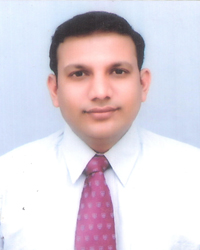
Author
Dr. Vivek AryaDate
15-May-2016Category
ArticleLanguage
EnglishTotal Views
12372Total Comments
1Uploader
amitUpload Date
16-May-2016Download PDF
-0 MBTop Articles in this Category
Dayanand's ideas have been instrumental in promoting women's education among women in north India.
“Arya Samaj and Women’s Education: Kanya Mahavidyalaya, Jalandhar”
Madhu Kishwar, Economic and Political Weekly, Vol. 21, No. 17 (Apr. 26, 1986)
The Kanya Mahavidyalaya in Jalandhar was set up in the 1890s in response to the need to impart to women a special kind of education which would enable them to adapt themselves to the new demands made by the educated men of the family without losing their cultural moorings. It was one of the most successful experiments of its kind as well as the most daring and radical in its innovativeness. Its founder, Lala Devaraj an Arya Samajist and his supporters most of whom were women, faced criticism and attack from conservative opinion both inside and outside the Samaj. The battles they fought and the way the internal contradictions in the Arya Samaj theory and practice were resolved are significant because they are typical of the legacy inherited by women’s education today from its nineteenth century beginnings.
THIS is a case study of the Kanya Mahavidyalaya, Jalandhar, one of the first girls’ schools in the Punjab, which developed into a college and served as a model for women’s institutions not only in the Punjab but in many other provinces as well. It was a product of the Arya Samaj religious and social reform movement which began in the late nineteenth century.
As such, the genesis of this institution, its early struggles, pioneering phase and later development shed light on the way the question of women’s education was taken up and worked out by the Arya Samaj leaders and members. Like the other regional social reform movements in the nineteenth century the Arya Samaj movement was initiated by an urban educated elite, in response to the new economic, social and political forces set in motion by colonial rule. The town-based trading classes provided the social base of the Arya Samaj movement in Punjab. The movement took its inspiration from the teachings of Swami Dayanand Saraswati, who had called on Hindus to purify the Arya religion of later distortions by restoring its Vedic essence, and to defend it from attack by colonial, christianising forces.
While guarding itself against domination by the British rulers, the Punjabi elite simultaneously sought to adapt itself to the requirements of the country-wide network of employment created through the establishment of the colonial administrative apparatus. In fact, opportunities for social and economic advancement available to Indians were limited. British officials justified their monopoly of all top jobs on the grounds that Indians were an inferior people. They cited the rigidity of the caste system, the practice of untouchability, the cruel treatment meted out to women as evidence of the inherent inferiority of Indians. Hindu religion was a special target of attack. Contempt for Indian society assumed increasingly aggressive forms as some Victorian administrators undertook the "civilising" mission of British rule. The educated Indian elite, therefore, suffered not only from racial discrimination but also from expressions of scorn calculated to make them doubt their competence to manage their own affairs. The Arya Samaj effort at religious reform was in part a response to the British ideological attacks on Indians as a backward people and on Hinduism as a major cause for their backwardness. It was an attempt to renounce those features of traditional society which seemed to obstruct their advancement. The agenda of the reform movement in general, and of its educational effort in particular, came to be defined largely by what the colonial rulers identified as the main weaknesses of Indian society.
WHY EMPHASIS ON WOMEN’S EDUCATION
Following the annexation of Punjab, and the resultant decline of the indigenous elite the indigenous education system suffered widespread neglect. There is some evidence that colonial rule resulted in a deterioration of women’s situation, of which one symptom was the decline of education for women, as part of the general decline of indigenous education (G W Leitner, a British orientalist, in "History of Indigenous Education in Punjab", had observed that upper class Hindu and Muslim women used to receive some education at home or through religious institutions, and that a large number of women in princely states were found to be literate at the time of annexation.)
The Education Department of the British government began to take some interest in opening female schools from 1862 onwards. But this effort remained very half-hearted largely due to the government’s reluctance to spend more than a token amount.2 In any case, most upper class families were reluctant to send their daughters to government schools, because of the presence of male teachers and inspectors. It was women from the lower castes and classes who went to these schools because they were attracted by the stipends and the prospect of employment as teachers. This further strengthened the prejudice against government schools; upper caste parents were not willing to let their daughters be taught by ‘lower’ caste women teachers. Thus, within no time, government schools began to languish and decay because of lack of support either from government or from local patrons.3
Simultaneously, however, the missionaries launched their own educational institutions. They were much more vigorous in their
activity and much better funded. They received generous support from the government, both financially and politically. Female missionaries also made special efforts to reach upper caste women through zenana (women’s section of the house) visiting or house to house tutoring classes for women while the men were away at work. This provoked a sharp reaction; it was charged that the missionaries were out to subvert the stability and sanctity of the Indian family by their denationalising influence.
Another factor which appeared as a threat to the stability of the family was the situation with regard to widows. In 1881, 24.8 per cent of women over 15 years of age among all communities in Punjab were widows.4 Upper caste widows were in a particularly vulnerable position since they were restricted from obtaining employment outside the home and were also forbidden to remarry. The forms of home-based employment that had traditionally been available to them, such as handspinning, were on the decline, due to the flooding of the Indian market with British manufactured goods.’
Upper caste widows were, therefore, being forced into greater dependence on their families, which rendered their position very vulnerable. They were often subject to neglect and maltreatment and made htlpless victims of sexual abuse. Contemporary newspapers are full of reports of how some of these widows were abandoned by relatives or condemned to such a miserable life that they were forced to fend for themselves. The reformers were alarmed by these phenomena. It seemed to them that upper caste widows constituted a readymade recruiting ground for prostitution which, they claimed, was on the increase in urban areas. Though the number of women who actually left home and were lured into prostitution is likely to have been very small, even stray cases evoked a near-hysterical response. An important reason for special concern with bettering the status of widows seems to have been the fear that if they continued to be maltreated, they would be compelled to seek undesirable escape routes, thus jeopardising the stability of the family structure. There were stray cases of women who had been victimised by their families being given shelter and protection by missionaries, who offered material incentives such as shelter, stipends for studying, and employment.6 For these reasons, the question of women’s education, came to assume a central position in the nineteenth century reform movement.
In a situation where men were rapidly taking to British education, the reformers argued that an educated man needed an educated wife. They argued that if women remained illiterate, they would indulge in fooligh talk and unnecessary squabbles which destroyed the harmony of the family and encouraged men to look for companionship outside the house. Hence, men took to visiting brothels and courtesans. Education for women was advocated primarily as a means to bridge the mental gap between husbands and wives, mothers and sons. The conditions of seclusion under which these upper caste women lived meant that for the most part they lived in a world of their own. Enjoying very limited contact even with their husbands, they had been largely left to themselves to devise their own outlets within the repressive culture of the zenana. In the process, their thinking had become inaccessible to men. But this extreme form of seclusion no longer suited the new needs of the men. It became necessary for women to adapt their lives and attitudes to the men’s requirements.’
With regard to motherhood, Samajists insisted that an illiterate woman could not be entrusted with the care of the next generation. Yet, they were wary of exposing women to missionary schools for fear of conversion and undue westernisation. There is a story from the life of Lala Munshi Ram, later known as Swami Shraddhanand, which throws light on the Samajists’ perception of the need for the Samaj to start girls’ schools. One day, when Lala Munshi Ram returned home, his little daughter, Ved Kumari, came running to meet him, she recited a couplet she had learnt at the mission school that she attended: "Ek bar Isa Isa bol, Tera kya lagega mol? Isa mera Ram Ramayya, Isa mera Krishna Kanhayya"8 [Take the name of Jesus just once, what will it cost you? Jesus is my Lord Ram, Jesus is my Lord Krishna.] Munshi Ram was horrified at the proselytising wiles of the missionaries. He immediately decided that Hindus would have to make women’s education a priority if they wanted to preserve their culture and religion from the influence of Christianity.
The Samajists felt that Hindu girls needed a special kind of education that would enable them to adapt themselves to the new demands made by the educated men of the family without losing their cultural moorings. Even though, at one level, the Arya Samaj posed a challenge to the process of westernisation, it was also deeply influenced by the ideology of the rulers. The Samaj notion of a "modern" woman was modelled upon the Victorian ideal of womanhood.
This ideal postulated a sharp demarcation of private and public spheres—the man having access to both, the woman being by and large confined to the home. It was seen as the woman’s duty and privilege to welcome and sustain her husband when he returned home, exhausted from his battles in the harsh and competitive public world. She had to be educated enough to serve as his confidant, but not enough to pose any kind of challenge to him. She was to be all softness and submissiveness, love and patience, the "angel in the homes". She also had to be an accomplished entertainer so as to soothe his worn-out nerves by playing and singing to him—thus combining some of the qualities of a skilful courtesan with those of a dutiful home maker.
This role model had an immensely powerful influence on the minds of most Indian educationists of the nineteenth century. In effect, the new education introduced for women at this time sought to produce an indigenised version of the Victorian housewife rather than create any indigenous educational theory or practice.
I
The Beginnings of New Schools for Girls in Punjab
Nonetheless, a lot of creative energy came to centre around the new schools for women that were started in the 1890s. Since these schools were not constrained by government regulation, they provided a freer field for experiment and innovation.The Kanya Mahavidyalaya (Girls’ Higher School) of Jalandhar was the most successful of these experiments as well as the most daring and radical in its innovativeness. From the beginning, its founder, Lala Devraj, and its supporters and active workers, a majority of whom were women, faced criticism and attack from conservative opinion both inside and outside the Arya Samaj. The battles they waged and the way the internal contradictions in Arya Samaj theory and practice were resolved are significant because they are typical of the legacy inherited by women’s education today from its nineteenth century beginnings.
During the 1880s, the Amritsar branch of the Arya Samaj seems to have taken the first initiative in educational activity for girls. In 1885 it established three girls’ schools.9 The Lahore, Ferozepur and Jalandhar branches also made similar attempts. The Jalandhar Samaj made three attempts to run a girls’ school before they achieved success. In December 1886, a resolution was passed in the Antrang Sabha of the Jalandhar Samaj in favour of opening a zenana school for which they sanctioned an expenditure of one rupee per month.10
Lala Devraj’s mother, Kahan Devi, took charge of it and classes were held in her home. The teacher, named Mai Ladi, had earlier worked in a missionary school. After some time, the Samaj stopped its Re 1 grant but Kahan Devi continued to finance the venture on her own. She paid the teacher Re 1 a month and four chapatis (unleaven ed bread) a day. However, the school had to be closed due to paucity of funds.11 Another attempt, made in 1888-89 was also unsuccessful. In 1890-91, the school finally took off. By 1892, there were 55 girls on the rolls.12
In 1893, Lala Devraj and Lala Munshi Ram proposed that the existing primary school be expanded into a high school, a Kanya Mahavidyalaya, with a girls’ hostel and a widows’ home. A sub-committee was appointed to do follow-up work. After several meetings, they drew up a plan and sent it to prominent educationists all over the country, and made a general appeal for funds.13
This sparked off a debate which waxed fast and furious throughout 1894, between the two wings of the Arya Samaj—the Mahatma or Gurukul wing, supposed to be more orthodox, to which Lala Devraj and Munshi Ram belonged, and the "college wing", supposed to be more progressive, which was responsible for the founding of Dayanand Anglo Vedic (DAV) schools and colleges for men. It is ironical that the supposedly more orthodox wing supported "higher" education for women while the supposedly more progressive wing opposed it.
Although the opponents of women’s education agreed that "higher", that is, high school education, could not be denied to women for ever, they argued that it was "premature, from a practical point of view, to think of giving high education to girls".14 The debate was sparked off by Lala Lajpat Rai through an article he wrote in the January 1894 issue of Dayanand Anglo Vedic College Samachar. The controversy was carried on in various newspapers of Pubjab. A series of letters for and against high education for women appeared in The Tribune of 1894.
The opponents of the venture claimed that it would divert much-needed funds and resources from men’s education. They felt that the further spread of higher education amongst men would gradually prepare the ground for women’s education, but, at the present time, public opinion was not in favour of it. When the success of higher education for women in Bombay and Bengal was cited, they dismissed it with a wave of the hand: "Bombay and Calcutta are now able to produce a female graduate here and there (a thing in itself of doubtful advantage)."15
The decline of government girls’ schools was put forward as "evidence" of the fact that Punjabi public opinion was not prepared to accept the idea of women’s education. The champions of the cause retorted that this was because government had not treated women’s education as a priority. They also pointed out that "… to deny high education to our women is to deny them, as a class, any education whatsoever", since primary education for girls was dependent on the availability of trained women teachers.16
The "college party" expressed great fear that higher education would lead to "over-culture" amongst women and unfit them for domestic duties. However, the Mahatmas hastened to assure them that education would be geared to producing better wives and mothers, and would not teach women to compete with men or to look for employment like western women, since no one was "seriously thinking of turning out ladies mistresses of arts … no sane person would ever dream of making his daughter aspire to that degree!" 17 They continually repeated that "the education we give our girls should not unsex them".I8
The Mahatma wing of the Arya Samaj was concentrating more on social and religious than on political and economic reform. Writers of this persuasion emphasised the need to free women from superstition and ritualism, so that they did not hinder the "progress" of the men: "Social reformers must by now have realised that it is our women who stand in the way of reformation and progress and it would be their education and that alone that will smooth the path of social reformer"’19 They made much of the plight of the hapless man married to an uneducated woman. "Girls’ education may be looked at from two standpoints of view. Firstly from the educated husband’s point of view and secondly from the view of reformers of Hindu nation and Hindu people. The educated husband requires only to be taken into confidence and he will point to you the gloomy, dark and miserable life he leads at home … To the reformer we can only say, marry an ignorant, illiterate wife and show me the record of pure ideas that you entertain and the deeds that you have done!’ 20 On this basis, they disagreed with the view of their opponents that women’s education would cause "domestic aberration", "physical deterioration" of women, and hence, ultimately, the "annihilation of the race itself!’21
While the debate went on, the Kanya Mahavidyalaya (KMV) was founded and began to make progress. The Mukhya Sabha (the managing committee), a registered society which was established in 1896 to control KMV, stated its purposes thus:
1. To establish at Jalandhar City an institution, for the education of females called the Kanya Mahavidyalaya, with the following purposes:
(a) To impart physical, mental and religious instruction.
(b) To give instruction in handicrafts such as needlework, plain sewing, etc.
(c) To give’ instruction in household economy, such as cooking, etc.
(d) To give instruction in hygiene and elementary rules of health. [Sanjeev: This is ultimately a direct route to the scientific method]
(e) Training of females as school mistresses.
2. To encourage and produce literature in Hindi and Sanskrit for the use of females.22
From the beginning, many women devoted their efforts to promoting the school. Students became fund raisers, workers and, later, teachers, facilitating its growth.This process demonstrated vividly that women could in fact do many things which certain sections of the Samaj had doubted their ability or willingness to do. Lala Devraj’s ideas underwent a definite change as he worked with a large number of women in a range of activities in and around KMV. Thus, the institution developed into more than a school. It became a catalyst for various kinds of change relating to women in Punjab.
THE PRIME ARCHITECT OF KMV
Lala Devraj, the main architect of KMV, belonged to the well known Sondhi family of Jalandhar. Both his father, Lala Saligram, and his grandfather had served as honorary magistrates. The second of five children, Devraj was born on March 3, 1860. He was a sickly child but was his mother’s favourite. Throughout his life, he was devoted to his mother, Kahan Devi, and always declared that his work for women was inspired by her life of selfless service, generosity, broadmindedness and simplicity.
Devraj was educated first in a mosque school and later in a mission school. As a young man, he had a circle of friends who were imbued with nationalist fervour. Amongst them, he was known as Mr Liberty, and also as Satyaprakash (light of truth). His brothers, Hansraj and Bhaktram, and his brother-in-law, Munshiram, who were among his close associates, went on to become luminaries of the Arya Samaj. At the age of 23, Devraj took a vow to use only khadi. He kept this vow all his life. From an early age, he began to maintain a diary which also became a lifelong habit.
Unwilling to take up government service which, he believed, would inhibit his freedom, he helped to manage the family business of money lending and zamindari. His first foray into social activism was the establishment of a Deshonnati (national upliftment) Fund in his community. He did a lot of travelling and public speaking to raise money for this fund which was to be used for religious reform.
He also started in his house a youth club which met regularly to discuss social issues. Devraj himself was the most active member of this club, which, in 1883, was transformed into the Jalandhar wing of the Arya Samaj.
He was married young and had five sons and a daughter, Gargi, who died at the age of 17, to his great grief. He was deeply attached to his wife, Sundari, and undertook her education with zeal. She soon became capable of running the women’s wing of the Arya Samaj and later participated actively in KMV activities, serving for years as manager of the Widows’ Home.
In his student days, Devraj began writing for local newspapers. At various times of his life, he edited the Kesari, Saddharm Pracharak and the Sahayak. He made a notable contribution to Punjabi journalism, particularly to enhancing women’s activity therein. To please his father, Devraj served as a Zaildar (supervisor of revenue collection and administration of a group of villages) for some years. He was also made an honorary magistrate. Although he was highly commended for his good work, particularly during plague and other epidemics, he felt extremely uneasy at the pressures he had to face from government, administration and police. He resigned during the Khilafat and Swaraj movement of 1920, noting in his diary that "A man who is not adept at flattery and servility cannot be an honorary magistrate!’ 23
He remained an opponent of British rule throughout his life. His diary is full of laments over, the oppressed condition of India and Indians who, he wrote, were treated worse than dogs by the British rulers. He was a supporter of the Indian National Congress, attending its sessions and aligning his constructive work with its principles.
When Devraj joined the Arya Samaj, he had to face a lot of opposition from his relatives, particularly his father, who was a Sanatani (orthodox Hindu), although he had his mother’s support. Once, he even left home and proceeded towards Rangoon but was recalled from the ship by a telegram and messengers sent by his father.
The Jalandhar Arya Samaj soon became the centre for Samaj activity in the Doaba.Devraj travelled widely in and outside Punjab, speaking, raising funds, conducting shuddhi (purification) campaigns, integrating low caste people into the community, and countering Christian mission activity. He raised large sums for the DAV college, Lahore, and initiated propaganda work at fairs, festivals, grain markets and other public venues. The Hindu religious establishment, particularly the brahmins, bitterly opposed Samaj activity, especially the participation of non-brahmins like Devraj. He always met such opposition in a courteous, gentle but firm manner and eventually overcame it.
As the Samaj grew and power struggles began to emerge within it, Devraj, although often acting as peacemaker, distanced himself from it, and immersed himself in activities related to women in and around KMV. For the rest of his life, until his death at the age of 75, he treated the women’s cause as his mission or dharma.
Devraj’s first principle in running KMV was the parent-child relationship between him and the girls. He personally concerned himself with every aspect of their lives, and tried to maintain an intimate relationship with each student and her family. His experiments in promoting women’s education and women’s freedom earned him acclaim but also much hostility. He was accused by other Samajists of acting as a corrupting influence, and also of trying to become the all-in-all of KMV. At one point, the managing committee decided to replace him with two other Samaj leaders. Devraj was deeply grieved but refrained from fighting back. However, the KMV girls, their parents, and the teachers raised such a vociferous protest, some of them going on an indefinite fast, that the move had to be withdrawn.
THE KMV EXPERIMENT
The birth of the Kanya Mahavidyalaya, Jalandhar, inaugurated a new era in the history of women’s education in Punjab, the subjective intentions of Samaj leaders notwithstanding. With this event, and the continuing controversies it gave rise to, the Arya Samaj movement for women’s upliftment lost its homogeneity. To begin with, it was the college party versus the Gurukul wing. But if we take the growth and development of this particular Kanya Mahavidyalaya as a case study, newer trends and divisions within the Samaj movement become evident, which point not only to the great potential that lay within the movement but also to its inherent limitations.
The decision to launch this bold experiment was initially prompted by the desire to produce updeshikas (women preachers) for Ved pruchar (preaching of Vedic philosophy) and "enlightened" wives and mothers who would further the cause of religious reform. Lala Devraj was convinced that the "Arya Samaj would have made a lot more progress if our women had been with us . . . I am therefore watering the roots . . . when mothers will become Aryas, why would then sons not be good Aryas?"24 For Lala Devraj, ‘the nation’s prime power was in the Matra Shakti (mother power). He sought to channelise this power for the regeneration of Indian society from its "abysmal ignorance",
THE NEW CURRICULUM AND THE LITERATURE PRODUCED BY KMV
In the Punjab, Lala Devraj was the pioneer of the kindergarten system of education. His innovative hansi khel mein shiksha (education through fun and games) sought to encompass the entire life of the child. The various school texts he devised for this purpose show the creative nature of the KMV experiment in its early days.
As the institution grew beyond the parameters initially envisaged for it, Lala Devraj began to feel the need for a curriculum more suited to the girls’ everyday lives. Since such literature was not readily at hand, he began to write textbooks specially for girls. The medium of instruction was a supposedly purified version of Hindi which they called Arya Bhasha, the language of the Aryas. In actual practice, it was a curious blend of Punjabi and Sanskritised Hindi with a tinge of Urdu.
KMV’s role as a nucleus of educational activity in Punjab and North India is nowhere more evident than in this contribution of Devraj who wrote most of the books himself and arranged for their publication and distribution. Some of the books later came to be translated into regional languages such as Marathi, Telugu, and Gujarati. In 1904, the Punjab and Central Provinces governments recommended some of these texts for their schools. This was a triumph for the KMV concept of girls’ education. Lala Devraj was given an award of Rs 200 for his contribution to children’s literature. The print run gives an idea of the wide reach of this literature: Pahli Pathawali (first primer) 70,500 copies; Doosri Pathawali (second primer) 43,500; Akshar Dipika (lamp of the alphabet) 4,000 (27th edition); Patra Kaumudi (a garland of letters) 20,500 (11 editions); Katha Vidhi (stories) 72,500 (16 editions); Balodyan Sangit (kindergarten songs) 34,000. The KMV sold these books from its own Sahitya Bhandar (bookshop).25
In 1897 KMV also began publishing a magazine called Panchal Pandita (in later years, the KMV magazine was called Jalvid Sakha or friend of the Jalandhar school), which disseminated the message of women’s education throughout Punjab. It was described on the title Page as "A monthly magazine of 16 pages Hindi and four pages English … solely devoted to the interests of Indian women!’ It aimed at "serving as a handy periodical for educated ladies and young students:’26 It was packed with information about the experiments being conducted at KMV. Many other branches of the Arya Samaj, reading about these successes, were inspired to open girls’ schools modelled on KMV. By 1918, there were more than 104 pathshalas (schools) following the KMV syllabi. Several government schools included Panchal Pandita in their curriculum in addition to the KMV texts.27 It was thus fairly successful in fulfilling its original objectives: "Of furnishing good reading matter to our sisters, cultivating their mental faculties by… widening their interests by giving them a view of the world outside the closed zenanas, and of infusing in them liberal sympathies and elevating ideas728 While Devraj did a substantial amount of the writing in the magazine, some of it under pseudonyms, many students arid teachers were also involved in the editing and writing, and the magazine thus became a forum for women’s creative writing.
The education imparted the government and mission female schools had been mainly a process of learning by rote. On the other hand, ""modern" education for boys had been equally mindless in its own way since it was oriented only towards producing an army of clerks. In contrast to both these, the education at KMV was multidimensional. It sought to inculcate a new perspective towards life and to permeate with that perspective even the smallest and most mundane details of everyday existence. For in stance, Balodyan Sangeet for the second standard is a compendium of nursery rhymes of which the following is a sample. "Kanghi" (comb) gives children elementary lessons in hair hygiene; "Roomal" (handkerchief) is about the need to carry a handkerchief in order to stay clean; "Vyayam" (exercise) dwells on the need for exercise; "Pustakein" (books) on books as good companions; "Snan" (bath) on the merits of daily bathing to ward off all diseases; "Vayu Sewan" (getting fresh air) on the benefits of an outdoor life; "Mitti" (mud) is on the uses of earth and soil but does not forget to remind its little readers that mud is not meant to be eaten; "Bhut Bhutni" (ghosts) is an attack on superstitious fears of children, telling them that such fears are born of people’s ignorance and illiteracy, so it is the duty of educated children to attach this form of obscurantism; "Bhojan" (food) emphasises the need for a balanced diet and teaches how to manage the kitchen efficiently; "Desh Prem" (love for the country) prepares the girls to be ready to sacrifice their all for their country.29
Likewise, "Doosri Pathawli" for students of class three gives similar messages through the story form. "Gudiyon ko gali" (Abusing dolls) is a piece on how bad habits such as absuing others may be picked up in small, seemingly harmless ways; "Supatra our kupatra ko dan" (Alms giving to the degerving and undeserving) is a piece on "enlightened charity" and the superiority of vidyadan (the gift of learning) over all other forms of giving and charity. "Lagatar kam karna" (working continuously) teaches the students to be industrious and persevering; "Itni si chori" (a petty theft) is a story about the disastrous consequences of small irresponsible actions; "Rogiyon ka poshan, Rog ka karan" (Nutrition for invalids; causes of sickness) and "Rogi ke Seva vidhi" (Methods of nursing invalids) are tracts propagating a scientific attitude towards disease and its cure. Finally, as in all KMV textbooks, there are a few lessons on patriotism and nationalism, such as "Janani Janmabhumi" (Motherland) and "Swadesh preeti" (love of one’s country).3°
"Pathshala ki Kanya", (Girls of the school) another book written by Lala Devraj, has several chapters on household duties, punctuality, cleanliness, and women’s dress.31 Stri Darpan (Mirror of women) is a kind of housewife’s guide focused on household management. Stri Dharma Niti (women’s duties) equips the girls with the whole Arya Samaj ideology on their "special" role as women in family and society.32
"Patra Kaumudi" offers a more interesting example of the role models held up before the KMV girls. The book is a nineteenth century version of 'Letters for all occasions’.33 The sample letters have a wide range, from application for scholarships to letters ordering books, invitations to Samaj functions, sick leave applications, reminders to the washerman to deliver the wash, letter to a station master asking for a copy of the railway time table, letter ordering crates of oranges, letter to a domestic servant ordering him to rejoin duty immediately, letter to the doctor describing symptoms of disease, application for employment, letter to the pandit (priest) asking him to come over for a consultation, letter to a shopkeeper placing an order for monthly provisions, letter asking for a subscription to a magazine, letter to a sister asking her to send a particular kind of rose tree, letter to a younger sister rebuking her for her untidy handwriting. There is also a whole section on letters pertaining to school management, obviously intended for future teachers whom KMV hoped to produce.
The range, content and style of these letters suggest the changing roles within the family fpr which the girls were being trained. The emphasis on "good breeding" and "good mannerisms" points to the inevitable pressure for westernisation to which the Punjabi urban educated family was subjected. The ideal of the Victorian housewife loomed large on their mental horizon. The letters do, however, help the girl handle her immediate environment, so that she does not feel completely lost in a fast changing urban milieu.
The same principle of education—enlarging consciousness starting from the student’s immediate environment, needs and preoccupations—is visible in the geography, history, natural science courses as well. Geography was introduced in the second class. The course for this class was "Knowledge of the four directions, and to identify important places from the map of the KMV campus!’ For the third class, it was "General information on the geography of your city and district!’ In the fourth class, it went on to "Geography of Punjab", in the fifth, to "Geography of India", in the sixth, to that of Asia, and in the seventh and eighth to that of Africa, Australia, South and North America, New Zealand and Europe.34
History was started in the sixth class, with "Ancient Historical "Pales" and was continued with "Tales of Musalmani Times" in the seventh, and the History of India in the eighth and ninth classes.35 Scouting, gardening and botany were all combined in one—a refreshing contrast to present day textbook learning and lab-confined sciences, totally unrelated to daily life. The course for the eighth class was as follows: Trees: names of trees on the KMV campus; identifying leaves, flowers, seeds; information about when trees shed leaves, when they flower, the uses of wood and the planting of trees; Flowers: how to plant them; knowledge of different flowers and the seasons when they bloom; identification of flowers and leaves by their smell, keeping the eyes closed; making of bouquets and garlands; Grains: their kinds; sowing and harvesting; different kinds of manure; how to prepare them; Fodder: kinds of fodder grown around KMV campus; sowing and harvesting; process of feeding animals; of drying and processing grain; Agricultural implements used for gardening and for agriculture.The girls were expected to observe life around them, live in interaction with it, and gather this information without the help of books.36
Even more innovative was the introduction of physical exercises and games, in an attempt to impart "hansi khel mein shiksha!’ The emphasis placed on this aspect is obvious not only from the numerous stories, poems, essays, that Lala Devraj wrote around this theme, and incorporated in school texts, but also in the manner in which he devised ever newer ways of imparting it. The press held up KMV as a model in this respect for other schools the country over. One issue of the Indian Social Reformer reported on it:
One of the most interesting girls’ schools maintained by native effort is the Kanya Mahavidyalaya of Jalandhar. In spite of its name, the instruction given in the school does not seem as yet to be of a high standard; but there are certain interesting features about it, one of which is that the girls are taught Veda Mantras (incantations) and are made to perform Sandhya (evening prayer) contrary to the orthodox Hindu view that the Vedasara (essence of Vedas) is not meant for women and Sudras (below the twice born castes) … The following description of a game, which combines physical exercise with moral instruction, is from the pen of a visitor and may be read with much interest:
Twelve girls form themselves into a circle, hand in hand representing Time or the dial of a clock. Two girls stand in the midst of the circle and act the part of fortune-tellers. Two more come, one after the other, and with folded hands ask questions about their fate. To the first one, the fortune-tellers address: ‘0 daughter, tell us something about your life and how you spend your time! ‘People call me a good girl’, she answers, ‘I rise early in the morning, wash my hands and face, do household work with great diligence, attend the Pathshala regularly. I speak the truth and obey my parents! ‘Thou good girl, thou hast a bright future before thee and thy life is long’ is the soothsayer’s reply. Immediately after this, the circle begins to move on, and whirls round and round, the girls singing, all the while, a beautiful song in praise of those children who make the best use of their time. The same question is put to the other girl. But as her life is spent in idleness and constant neglect of household duties, the soothsayers, of course, have to tell a different tale, foreseeing in her case, nothing but a gloomy future and a short life full of endless misery. The circle moves on again, the girls spinning round and round as before, but their song this time is something woeful. This is one of the numerous games, and they give so much fun and mirth to the little girls that even the Silliest among them do not think it hard to attend the Pathshala.37
There was an attempt to combine various elements of different systems of education which would together make a "successful housewife". "Sufficient attention [was] given to the teaching of the science and art of cookery in the school"35 Needlework, plain sewing, domestic economy, hygiene, nursing, gardening, papercraft, were important subjects. Sewing started from class two. The syllabus prescribed plain sewing and handkerchief making. By the time they reached class ten, the girls had learnt to darn socks, tailor shirts, pyjamas, petticoats, and do all kinds of fancy embroidery as well as knit sweaters, knickers and blouses.39
But Devraj did not stop here. His ideal of womanhood was beginning to undergo a radical transformation as is visible in the career of the fictional heroines of Panchal Pandita. One of these women is Suvrita who is described as a healthy, intelligent woman who freely and confidently mixes with men.43 Another ideal type is’ Suri Suvira. The name was coined by Devraj and she became a near-mythical figure in KMV lore. When writing about the suffragist Lucy Stone Blackwell, Devraj gave her too the name or rather the title Suvira (brave woman). This name thus came to symbolise a new role model with whom the girls were encouraged to identify.
Panchal Pandita propagated the view that women’s education was not charitable work but a vital nation-building task, part of the regeneration of enslaved India.Biographies of outstanding western women end with the hope that KMV girl’s will prove as illustrious, intelligent and scholarly.41 Thus, the story of Elizabeth Fry ends with the fervent hope that the women of India will perform an even greater task than Fry did, by reforming India’s homes, which are like prisons.42 The writer of this series of life sketches begins with a passionate appeal to the reader not to read further unless she is making an effort to become like the women depicted. The girls of KMV are specially addressed in this appeal.43
A game which goes much beyond conventional moralism is reported in the February 1903 issue of Panchal Pandita. It is called Suvira and is about a warrior girl who is not only brave in defence of her rights but can also wield modern weapons." In this game, the girls used crackers to simulate the gun battle fought by Suvira. The same issue lists other games such as Hath Pehchan (hand recognition), Rang Pehchan (colour recognition), Chun Chunav (choices) which combine physical exercise with the development of mental concentration.
It is evident that a conscious effort was made to foster the sense of self in the girls. The reader is addressed in the feminine gender, and there is a definite sense of the togetherness of women even though the authors are often men. The readers are often addressed as sisters and are exhorted to base their friendship with each other on common ideals and common work in the women’s cause.45
"Moral instruction" received "good attention" too, as a contemporary observer approvingly remarked.° Hynins and- bhajans were specially prepared for the girls by Devraj, Mai Bhagwati and others. Religious education in the tenets of "reformed" Hinduism was an integral part of the curriculum. The girls had to be well versed in the "principles of Arya Samaj", Sandhya ucharan (utterance of evening prayers) the Ramayana and Satyarth Prakash. They were also expected to be familiar with Manusmriti, the Gita and a smattering of the Vedas by the time they reached class ten.
Performance of the haven (purification ritual) as prescribed in the Arya religion was taught from class four upwards. This knowledge was imparted not only to make "good Arya mothers" but also in the hope of producing good Ved pracharikas. Girls were systematically trained in the art of Ved prachar and in giving lectures on Arya dharmd (way of life of the Aryas). This is mentioned as part of the syllabus for Snatika Vibhaga or classes eleven and twelve. The KMV students with their vyakhyans (lectures) were a common feature at Samaj functions all over Punjab.
Lala Devraj with his KMV students thus came to constitute a special wing, a women’s wing, of the Arya Samaj. It goes to Devraj’s credit that he played a crucial role in providing pracharikas (women preachers) and acted as a catalyst in the establishment of a whole chain of Stri Samajas (women’s associations) and Kanya Pathshalas (girls’ schools). When he began the practice of taking his students to attend Samaj functions all over the province, the initial response of fellow samajists was a hostile one. The first such instance was in 1897, at the function of the Ropar Samaj. But Devraj continued undaunted.
After a visit to KMV, the Director of Public Instruction wrote on January 22, 1918: "I cannot help observing what a relief it is after visiting some boys’ schools, in which the shadow of the examinations seems to darken all the school life, to come to aninstitution in which examinations are of small account and a wholesome, useful and pleasant life is the object for which the pupils are prepared!’
REFORMING THE WOMEN
In KMV propaganda or prachar, education was seen as the panacea for most of the ills that womankind is heir to, such as child marriage, high female mortality and prostitution. The logic was simple. Child widows were the most vulnerable to a "life of vice". If people started educating their daughters, there would be no child widows and hence no need for women to stray and "corrupt men". If women married young, before they were fit to be mothers, they were likely to ruin their health and that of succeeding generations.
Women’s wastefulness in their love of ornaments was criticised. They were taught to appreciate the aesthetics of austerity. Articles such as "Kurup na bano" telling women that excessive ornamentation made them look ugly, were quite common. KMV girls were especially discouraged from wearing ornaments and this was mentioned in the prospectus. But this was only during school life. It was customary for a married woman to wear jewels and KMV girls were expected to make the transition.
The question of reform in marriage rituals, especially with a view to promoting habits of thrift and controlling wasteful expenditure was a cause dear to the heart of the emerging commercial bourgeoisie in Punjab. Panchal Pandita is full of essays and stories which try to show the misery caused by pomp and show at the time of wedding and other ceremonies, and how families are ruined by it.
Dowry giving in itself was never attacked. However, extravagant weddings and giving of too much jewellery and fancy clothes was a butt of attack. The "ideal" daughter-in-law in one story is a girl who brings many books with her as dowry. Marriages conducted according to simple Vedic rites, both parties wearing khadi garments, and, sometimes, without dowry, were reported and highly extolled. However, to attack dowry per se would have inevitably involved raising the question of property rights for daughters, thus challenging one of the basics of patriarchy. The issue of women’s property rights was never taken up throughout the period of Arya Samaj reform movement.
In the early years of the movement, a constant battle was waged against supersitition amongst women. Some of the pieces written were not only hard hitting but also tried to promote a scientific world view. There was an attack on meaningless rituals and superstitious avoidance of certain foods by women. Customs such as women not wearing clean clothes for a whole year after a death in the family were also sharply criticised. The superstition regarding travelling on certain’ days considered inauspicious because of planetary configurations was denounced: "When ‘a planet is eclipsed, it is believed to have set, that is, it rises with the sun and sets with the sun … Why then are auspicious actions like marriages, and the comings and goings of women put a stop to? When Mars sets, ships do not stop nor do trains. Women’s mobility throughout the world does not come to a standstill. Births and deaths continue to take place. What crime have Hindu women committed against the planet Mars, which is miles away from the earth, that when it sets their movements should be restricted? How perfectly have the selfish men befooled women! … Break these irrational illusions on the strength of science. I assure you that Mars cannot harm a hair of your head:’48 Similar tracts exposed the folly of belief in ghosts and demons.49
Siyapa or mrit vilap—exessive mourning and beating of breasts by women on the occasion of death—was another object of repeated attack in Panchal Pandita.50 It was stated that women almost looked forward to such occasions because they provided an opportunity for women to be together and release their pent up emotions, tensions and neuroses. But the Samaj wanted to substitute more ‘enlightened’ safety valves such as bhajan mandalis (hymn singing groups) and Stri Samaj meetings.51
Religious obscurantism amongst women, their willing exploitation by racketeering sadhus, their flocking to pilgrimage centres in spite of these places having degenerated into dens of vice and the singing of what the Samajists regarded as obscene songs by women at weddings, became some of the issues which they linked to the fight against ignorance amongst women.
WIDENING OF HORIZONS
The education at KMV not only for the first time exposed the upper caste woman to her immediate environment—natural, socio-economic, political—but also brought her in touch with worlds of whose existence she had never known—from that of countrywide examinations to that of international relations, commented upon regularly in the columns of Panchal Pandita, from that of scientific experiment (Panchal Pandita carried articles on such wide ranging subjects as "The Uses of the Lemon" to "Solar Energy" to "Volcanoes") to that of feminist struggles in USA and England.
In the attempt to produce the "modern" housewife, a whole lob of literature that gave lessons in hygiene and scientific attitudes towards disease was produced. The information ranged from child care to plague innoculation to personal hygiene. Arya ideology saw the chief role of the woman as reproducer of the race. Therefore, women’s own health became an important issue in the interest of "race maintenance". Lack of physical exercise and fresh air, and ignorance of the right food habits were seen as the chief cause of disease amongst women, and the literature produced at KMV carried on a vigorous campaign in favour of physical exercise and exposure to fresh Air for women.
Linked to this was KMV’s campaign against Purdah which specifically concerned upper caste, middle class women. The arguments advanced against Purdah were that it had no Vedic sanction, that it prevented women from being helpmates and companions to their husbands as Sita, Yeshodara, Anasuya, Kunti, Draupadi and others had been. They were so ignorant that they could not protect their husbands and children from going astray. However, the protective and possessive attitudes towards women were not questioned. On the contrary, it was asserted that the real Purdah of a woman was her chaste spirit, her pativrat dharma (the vow of wifely duties) not an external veil. Lala Devraj, never tired of insisting in his tracts on Pehrava (dress) that purdah or modesty must be observed in dressing. Photographs of KMV students show tiny girls swathed in full length garments. The only parts of a girl’s body allowed to be exposed were the face, neck, hands and feet.
Yet there was much opposition by the orthodox within the Arya Samaj to innovations in KMV. The introduction of physical exercise and singing of songs at annual functions provoked much hostility. But the most controversial measure was the introduction of music and dance at KMV. These arts were supposed to be practised only by prostitutes and low caste women, nautch girls and mirasis (low caste entertainers). They were considered "unfit" for respectable women. Their opponents alleged that "the Pathshala people, by teaching girls to sing like Doms and dance like dancing girls, to exercise and exhibit these skills, are diminishing the glory of the nation".52
The KMV organisers were ingenious at the art of culling out relevant passages from ancient authorities and scriptures to justify the innovations they were introducing. Evidence galore was cited such as the life of Mirabhai and other examples from ancient texts like the Mahabharata to prove that women in ancient times were not only adept at singing but could play instruments such as the veena, mridang, chikara and damru.53 Upper caste respectability was sought to the lent to these arts: "Don’t think that music is only for mirasis and low caste entertainers. Rishis and Munis (learned sages) sang, so did the Rajkanyas (princesses). Music became decadent when it got into the hands of the mirasis. Actually, it is meant as the special forte of high castes and Kulins (highborn) … don’t think that singing is a despicable activity. Always sing virtuous songs. Don’t go to a place where you hear vulgar songs being sung. Just close your ears!’ 54
The


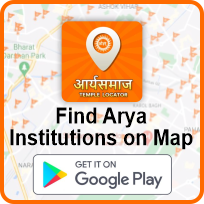

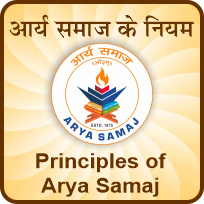







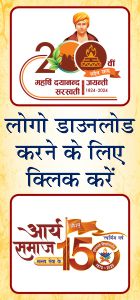
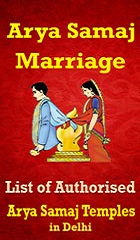
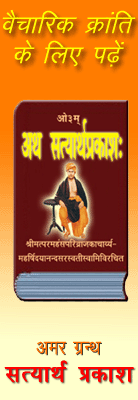


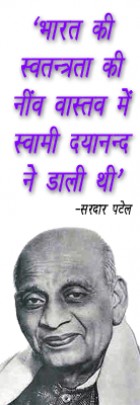
আর্য সমাজের নারীদের ভূমিকা